Effective Bird Scare Tape: A Detailed Guide for Homeowners
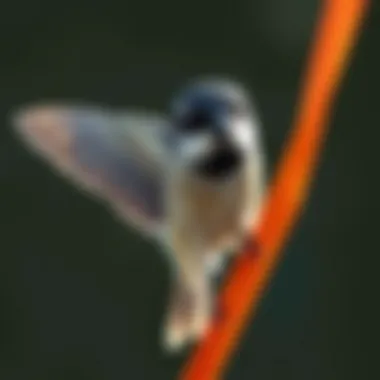
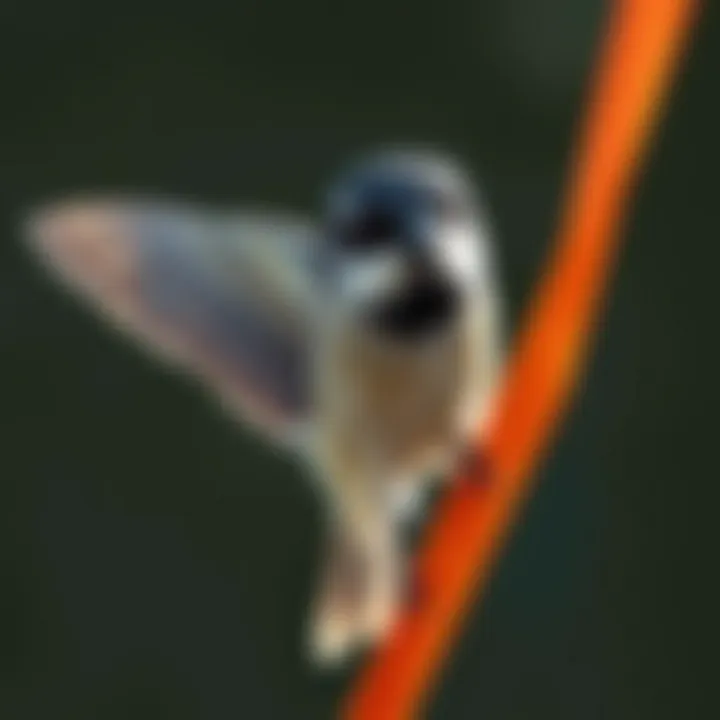
Intro
Birds can make your garden a paradise in one moment, but in the next, they might be causing chaos among your fruits, vegetables, and flowers. They’ve got an eye for fresh produce and can swiftly ruin your hard work if you’re not vigilant. That’s where effective, eco-friendly solutions come into play, and one standout option is bird scare tape. This guide is designed to shed light on the use of bird scare tape, showing you how it can be a crucial ally in your pest control efforts.
Understanding Pests
Definition of Pests
Pests are organisms that can damage or interfere with human activities, particularly in agriculture, gardening, and domestic environments. They can include insects, rodents, and, in this case, birds. Birds can become a nuisance when they feast on seeds, fruits, or young plants. Understanding what constitutes a pest is the first step in taking back control of your outdoor spaces.
Importance of Pest Identification
Identifying which birds are troubling your garden is crucial. It allows you to tailor your approaches to your specific needs. Some birds may peck at plants, while others might just take seeds. Recognizing their patterns and behavioral traits will certainly help you in implementing effective deterrents.
In this situation, bird scare tape comes to play as a specific advice. This tape is designed to create visual and auditory disturbances that send birds flying in the opposite direction. Knowing your enemy is half the battle, as they say.
Prevention Techniques
Home and Garden Preventative Measures
Preventative steps can be quite straightforward yet effective.
- Netting: This is one surefire way to create a barrier against unwanted pecking.
- Decoys: You might consider using fake hawks or owls, known to deter small birds due to their predator appearance.
- Cleanliness: Keeping your garden tidy can reduce the draw for birds. Fallen fruits and seeds are like an open invitation.
Seasonal Prevention Tips
Bird behavior often changes with the seasons. As winter chill gives way to spring warmth, more birds might come looking for food.
- During spring, ensure fruits are covered with nets as they ripen.
- In fall, you might find yourself needing to take extra precautions for seeds and young plants that are at risk from flocking migratory birds.
Eco-Friendly Pest Control Solutions
Overview of Sustainable Practices
When it comes to managing pests like birds, seeking out eco-friendly strategies is becoming a norm for many responsible gardeners. Chemical repellents can pose risks to both the environment and unintended wildlife.
Natural Remedies and Their Effectiveness
This is where bird scare tape shines. Made from reflective material, it plays tricks on a bird’s eyes and ears, confusing and deterring them effectively. Here’s why it’s worth considering:
- Non-Toxic: There's no need to worry about harming the birds or surrounding wildlife.
- Affordable: It won’t break the bank, providing a cost-effective deterrent solution.
- Easy to Use: The installation is as simple as hanging it where you need it most.
"By understanding your garden's unique ecosystem and applying eco-friendly methods like bird scare tape, you not only protect your plants but also foster harmonious coexistence with nature."
In the coming sections, we’ll delve deeper into installation techniques, advantages, and potential downsides of using bird scare tape. For those looking to maintain a balance between gardening success and wildlife respect, this guide aims to provide all the tools you need.
Intro to Bird Scare Tape
Birds can be beautiful, but when they take a liking to your garden or crops, they can become quite the nuisance. For homeowners and gardeners alike, finding effective methods to deter these feathered creatures is paramount. Bird scare tape stands out as an innovative solution that combines simplicity with effectiveness. This guide will explore how bird scare tape operates, its types, installation practices, and much more. With the right approach, you can keep those pesky visitors at bay and enjoy your greenery without worry.
What is Bird Scare Tape?
At its core, bird scare tape is a highly reflective strip designed to create visual and auditory disturbances that deter birds from your premises. Whether it’s shiny aluminum foil or brightly colored vinyl, these materials catch sunlight, creating flashes that are unsettling for birds. The principle is straightforward: by making your garden appear less welcoming, you can encourage birds to choose a different feeding ground.
Often, it resembles something like the shiny wrapping found on candy bars, unassuming yet surprisingly effective. When hung or strewn across your garden, it dances in the wind and gleams in the sun, mimicking movement that sends many birds flying in the other direction.
The Importance of Bird Deterrence
Birds filled with enthusiasm might seem harmless, but they can wreak havoc in a matter of days. A few of these avian intruders can devour seeds, berries, and even damages budding plants. According to the U.S. Department of Agriculture, losses to crops due to birds can run in the billions annually.
Deterring birds is crucial for several reasons:
- Protecting Gardens: Keeping plants and produce safe from feeding. Birds, when hunting for food, often discard seeds or uproot young plants in their quest.
- Maintaining Aesthetic Appeal: A garden filled with bird droppings or damage is far from pleasing. Bird scare tape can help maintain a clean and attractive space.
- Preventing Damage: Birds not only feed on fruits but can also be carriers of diseases that affect other wildlife and humans. By discouraging their presence, you can help maintain a healthier environment in your green spaces.
In addition to physical damage to your garden, the auditory chaos caused by a flock of feeding birds can lead to distress in homeowners. Bird scare tape offers an elegant solution to these challenges, allowing for serene and thriving plant life without the incessant worry of invasion.
By employing this effective deterrent, you can cultivate a healthier relationship with your garden, enjoying the beauty of nature without the unruly consequences that come with it.
"An ounce of prevention is worth a pound of cure; keeping birds away from your hard work today can save countless hours of loss and frustration tomorrow."
By learning about the right types of bird scare tape, how to install it effectively, and the specific advantages it offers, you’ll be well on your way to a bird-free garden.”
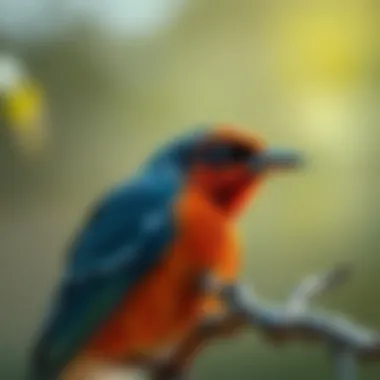
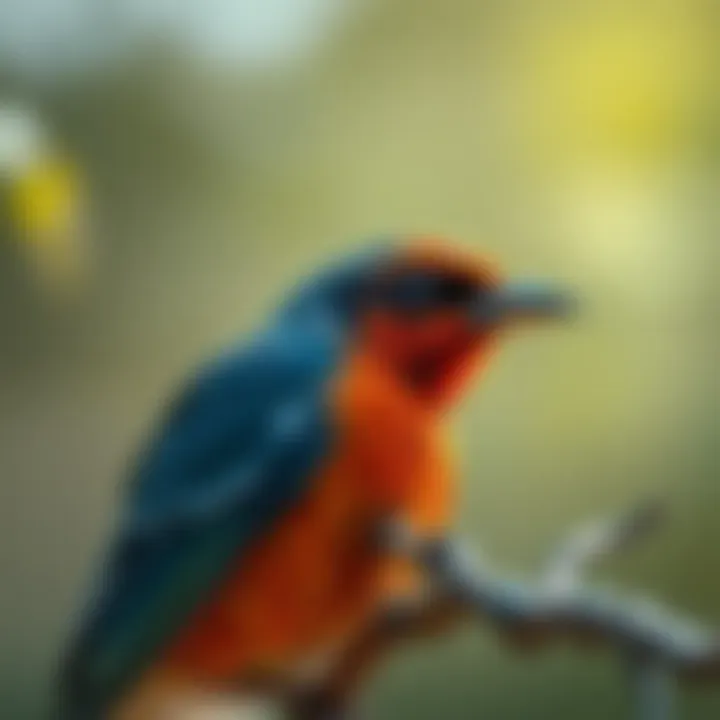
Understanding the Mechanism
Understanding how bird scare tape operates is crucial for maximizing its potential to keep your garden or property free from unwanted winged guests. The effectiveness of this tool goes beyond just its physical presence. It dives deep into the mechanics of light reflection and movement, which create an environment that deters birds. By grasping the basics of these mechanisms, homeowners can make better decisions about placement and application, leading to a more successful pest control strategy.
How Bird Scare Tape Works
Bird scare tape functions essentially as a visual and auditory deterrent. It is often made from a shiny, reflective material that bounces sunlight and other light sources in various directions. This shimmering effect can startle birds and disrupt their normal flight patterns. Furthermore, when the wind catches the tape, it flutters, creating unpredictable movements that can further frighten birds away.
Here are some critical points to consider regarding bird scare tape:
- Material Composition: Typically, the tape is produced from a plastic base coated with metallic film that enhances its reflective capabilities. This materiality plays a vital role in its visual effects.
- Color and Patterns: Different colors can affect the effectiveness of deterrence. For instance, more vibrant colors tend to be more noticeable against natural backgrounds. Some tapes incorporate stripes or contrasting colors, heightening visibility even further.
- Noise Generation: As the wind pushes the tape, it can generate soft rustling sounds, adding another layer of deterrence that birds find discomforting.
In practice, you need to keep in mind that the way bird scare tape works is often dependent on environmental conditions. If placed incorrectly or if the surrounding conditions change drastically, its effectiveness can diminish. Therefore, understanding these mechanisms allows users to adapt their approach for maximum impact.
The Role of Light and Movement
Light and movement play a cornerstone role in the functionality of bird scare tape. Birds, most of whom rely heavily on their visual acuity, are compelled to respond to both stimuli instinctively. The reflective surface serves to catch light in unexpected ways, captivating the attention of avian species, while movement—triggered by environmental factors such as wind—adds another layer of unpredictability.
- Light Reflection: While birds navigate using various visual cues from their environment, an unexpected flash of light can disrupt their patterns. The sparkling confound of light bouncing off the tape can lead to confusion among birds.
- Dynamic Movement: Like shadows flitting across the ground, the unpredictability of movement due to the wind helps in keeping birds on their toes. Rather than finding a comfortable perch, they are likely to perceive danger and fly away.
In summary, utilizing bird scare tape effectively means paying attention to how light and movement interact in your specific environment. The proper understanding of these concepts aids homeowners not just in using the tape but also in fine-tuning other pest deterrence methods for a comprehensive solution to their bird problems. Through careful observation and strategic implementation, one can leverage the mechanics behind the tape's operation to cultivate an inviting atmosphere in the garden, free of unwanted bird visits.
"Understanding the underlying mechanisms of bird scare tape can significantly enhance its effectiveness in deterring unwanted guests in your green space."
For more insights on gardening and pest control, you can visit Wikipedia or explore community discussions on Reddit.
Types of Bird Scare Tape
Understanding the various types of bird scare tape is crucial for effectively managing avian intruders. Each type serves a specific purpose, tailoring its application according to factors like the species targeted and the environmental conditions in your area. Choosing the right type not only enhances deterrence but also plays a part in maintaining the aesthetics of your space. Let's dive into the different types:
Reflective Tapes
Reflective tapes are designed to catch light and create a dazzling effect that disrupts birds' vision. Made from materials that reflect sunlight or artificial light, this type can ward off various species effectively. They often come in metallic finishes, amplifying their reflective properties. For instance, when sunlight strikes this tape, the dazzling glints can be enough to send even the most persistent bird packing.
Key benefits include:
- Versatility in Use: They are suitable for both indoor and outdoor applications. You can hang them around gardens, crops, or even on balconies to keep birds at bay.
- Long-Lasting: Typically, these tapes are made from durable materials that resist weather conditions, prolonging their effectiveness.
- Cost-Effective: Available in rolls, they cover a large area without needing frequent replacement.
"A single roll can serve multiple applications saving time and resources."
Colored Tapes
Colored tapes offer a different approach by utilizing vibrant hues to catch the eye of birds. These tapes aren't just visually striking; they're also useful in mimicking certain movements, which can help deter birds effectively. Bright colors such as red, yellow, and orange often pique the curiosity of birds, but the sudden appearance of the tape can also frighten them away.
- Aesthetic Appeal: Being colorful, they can blend well within garden decor. There’s no need for something that looks unsightly in your well-kept yard.
- Wide Spectrum: Various colors can be more effective for different bird species. For instance, some birds are more frightened by bright colors compared to others that might be wary of reflective surfaces.
- Dual Functionality: Aside from deterring birds, these tapes can sometimes double up as decorative elements, creating a visually appealing environment.
Infrared Tapes
Infrared tapes utilize technology that's on the cutting edge of bird deterrence. They can reflect infrared light, which is invisible to the human eye but detectable by birds. This made them an interesting choice for bird control, especially in areas where birds may have become accustomed to more traditional scare methods.
- Unique Mechanism: These tapes operate by disrupting the comfort of birds. Most species prefer sunny, warm areas; infrared tapes can alter the temperature in their proximity, prompting birds to choose other locations.
- Less Noticeable to Humans: Ideal for environments where the tape’s appearance should be minimized. This can be beneficial in urban settings or decorative spaces.
- High Efficacy: They have shown significant success rates, particularly in areas where birds have previously lingered long-term.
Installation Guidelines
Installing bird scare tape efficiently can make a world of difference in mitigating bird-related nuisances. This section outlines crucial considerations for achieving the best results with this product. Understanding the specifics of installation helps not just in setting up the tape but also in maximizing its effectiveness as a deterrent. When installed properly, bird scare tape not only serves its purpose but often enhances the aesthetic appeal of the area it is used in.
Choosing the Right Location
Choosing where to place the bird scare tape is key. Think of it like putting up a street sign; if it’s not visible, it won't do its job. Ideal locations include fields, gardens, or even rooftops where birds tend to congregate. Visibility is vital, as birds rely on their keen eyesight to recognize threats. Placing the tape where it's likely to catch the sunlight allows it to reflect and create a dazzling effect that is hard for birds to ignore.
- High Traffic Areas: Look for spots that birds frequently visit.
- Open Spaces: Tapes work best in areas with minimal obstructions.
- Varied Heights: Installing at different heights can increase effectiveness since many species have distinct flight patterns.
Best Practices for Installation
Securing the Tape
When talking about securing the tape, it’s paramount to ensure that it clings firmly. Without secure attachment, the tape may flutter away or become tangled, reducing its effectiveness significantly. There are various methods to secure it. Using staplers or glue can be quite effective, but ensure you choose materials that won’t interfere with the tape's shimmer. This aspect is central to the whole deterrent mechanism, as any slight disruption can lessen the visual effect that keeps the birds at bay.
- Key Point: Secure placement ensures stability and optimal performance.
- Materials Used: Consider using weather-resistant adhesives to withstand the elements.
Optimal Height and Angle
Setting the tape at an optimal height and angle can influence its performance. Most birds tend to fly at an average height when foraging or migrating. If your tape is positioned too low or high, it may fail in deterring them. An angle of approximately 30 to 45 degrees has been found to be particularly effective, as it enhances the ability of the tape to catch sunlight and create disturbances in the surrounding environment.
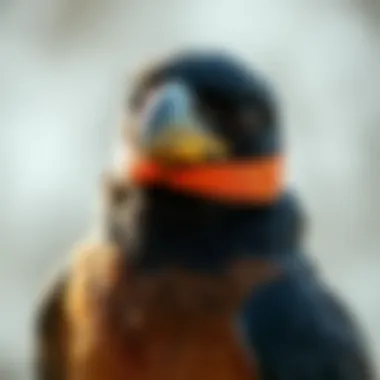
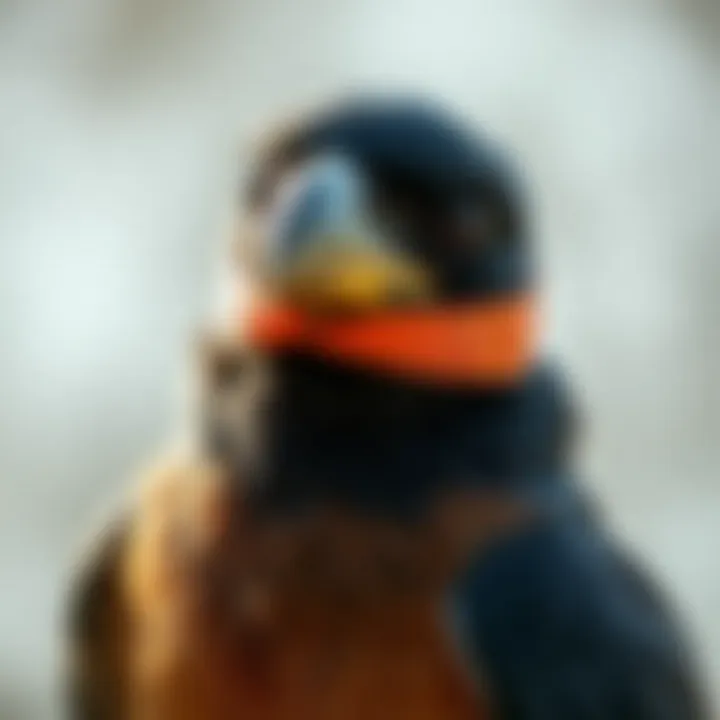
- Choice Benefits: This method captures the light best and creates moving reflections that confuse birds.
- Unique Feature: Adjusting angles can also cater to different species, as not all birds react the same way to visual stimuli.
"Installation is not just about placing the tape; it's an art that combines science and strategy to combat winged intruders."
By following these guidelines, housewives and homeowners can create an effective bird deterrent strategy that protects their spaces while being user-friendly. Mapping out a plan for installing bird scare tape might need a bit more effort upfront, but the long-term benefits are undoubtedly worthwhile.
Advantages of Bird Scare Tape
Bird scare tape offers various benefits that make it a preferred choice among both homeowners and professionals looking to manage bird populations in garden and agricultural settings. The advantages of utilizing this basic yet effective tool highlight its practicality and relevance when seeking to protect crops and outdoor spaces.
Cost-Effectiveness
One of the first things that come to mind when considering bird deterrence methods is cost. No one wants to break the bank while trying to keep those feathered nuisances at bay. Bird scare tape is prized for its affordability, often outshining other options such as netting or electronic repellents. With the ability to cover large areas with a relatively small investment, it's a solution that nearly fits any budget.
Moreover, bird scare tape doesn’t require complex installation or machinery, which ultimately saves on labor costs. You can purchase a roll of reflective tape at your local gardening store or online, and it typically lasts quite a while, meaning you won’t have to replace it often.
Eco-Friendly Solution
In today's world, many of us are conscious of our environmental impact and the potential harm to wildlife. The good news is that bird scare tape falls into the category of eco-friendly solutions. Made from non-toxic materials and designed to create visual and auditory stimuli without harming birds, it allows for humane pest control. This is particularly appealing to individuals who want to deter birds without causing them significant distress.
Using bird scare tape is an excellent method for preserving biodiversity while preventing birds from damaging crops or property. By adopting this approach, homeowners can achieve a balance between effective pest control and environmental awareness. As people are now more than ever focusing on sustainable practices, bird scare tape fits right in.
Ease of Use
"How simple can it get?" might be the underlying thought when considering the usability of bird scare tape. If you can handle a pair of scissors and a roll of tape, you’re good to go. Installation is relatively straightforward and doesn’t require specialized skills or tools. Just cut the tape to your desired length, secure it in place, and watch the magic happen.
Additionally, repositioning bird scare tape is a breeze; if the initial setup isn't working well, shifting it to a different location involves minimal effort. No fuss, no muss. This ease of use makes it particularly beneficial for homeowners who may not have experience with more complex pest control methods.
"Bird scare tape is a hassle-free, cost-effective, and environmentally friendly way to manage unwanted bird visitors."
In summary, when considering all these factors, it's evident that bird scare tape presents numerous advantages. Its affordability, eco-friendliness, and user-friendly nature contribute to its status as a preferred choice among those looking to protect their spaces from avian invaders.
Limitations of Bird Scare Tape
While bird scare tape can serve as a viable tool against unwanted avian visitors, it’s not without its shortcomings. Understanding these limitations is essential for homeowners aiming for effective pest control strategies without deluding themselves into thinking there’s a "one-size-fits-all" solution. Below are some critical aspects to examine regarding the efficacy and longevity of this deterrent.
Temporary Efficacy
Despite its initial success, bird scare tape often struggles with long-term effectiveness. Birds are quick learners, and once they become familiar with new additions to their environment, they may soon ignore or adapt to them. Here are a few vital points to consider:
- Learning Curve: Birds can become desensitized to the effects of the tape after a while. What may scare them off one day might not have the same impact weeks later.
- Environmental Factors: Weather elements can undermine the tape’s reflective properties. Heavy rain or prolonged sunlight might diminish its effectiveness.
- Placement Nuances: If installed improperly, even the best tape can falter. Incorrect angles or subpar height can mean the tape does not work as intended.
Regular reinforcements or changes in strategy may be necessary—like periodic repositioning or coupling bird scare tape with other deterrent methods. Consider activities that can enliven the scene, like switching around other bird deterrents, to keep your area off-limits for feathery intruders.
Maintenance Requirements
Proper care and maintenance are crucial. Without them, the benefits of bird scare tape can dwindle faster than you’d like. It might not take a PhD in ornithology to grasp this, but being diligent about upkeep is key.
- Visual Inspections: Periodic checks help ensure that the tape remains intact and fully functional. Damaged tapes lose their reflective qualities and fail to serve their purpose.
- Adhesive Longevity: Depending on installation, the adhesive may weaken over time, necessitating reinstallation. Keep an eye on the effectiveness of the attachment methods used.
- Continual Effectiveness: Replacing the tape every few months will help maintain its deterrent qualities, freshening the visual stimulus for birds that have grown accustomed to a longer presence.
In summary, while bird scare tape can be a useful tool in your toolkit against pesky birds, it's vital to recognize its limits. Temporary effectiveness and maintenance challenges can impact your efforts, making it crucial to adapt your strategies as you go along. Think of it as a constant negotiation with nature—whether you’re working in your garden or managing an agricultural plot.
Comparing Methods of Bird Deterrence
Bird deterrence is an essential topic for those looking to protect gardens, farms, and urban spaces from unwanted feathered visitors. In this section, we will examine various methods of keeping birds at bay, focusing on their effectiveness, practicality, and potential drawbacks. Understanding these methods enables homeowners and gardeners alike to make informed decisions about how best to employ them in their environments.
Bird Netting
Bird netting stands as one of the most traditional methods of bird deterrence. Suitable for a variety of scenarios, it is particularly effective for protecting fruit trees and vegetable gardens. The mesh acts as a physical barrier, preventing birds from reaching their desired food source.
Benefits of Bird Netting:
- Durability: Netting is often made from robust materials designed to withstand weather elements.
- Versatile: Can be used in various settings, from commercial agriculture to residential landscapes.
- Safe: Compared to other methods, it poses minimal risk to the birds as it does not harm them.
However, bird netting is not without its issues. It can become entangled in branches or winds, which might create additional maintenance challenges. If not installed correctly, birds may find ways to get trapped or push through the netting. Adapting netting systems to overcome these potential mishaps is crucial.
Ultrasonic Bird Repellents
Ultrasonic bird repellents provide a more modern approach to keeping birds away. These devices emit high-frequency sounds that are often inaudible to humans but disruptive to birds. The theory behind them is quite simple: the sounds are discomforting for birds, thus encouraging them to find quieter environments.
Advantages of Ultrasonic Repellents:
- Non-Intrusive: They don’t require any physical barriers, making them aesthetically pleasing.
- No Overt Maintenance: Once properly installed, they usually require minimal upkeep.
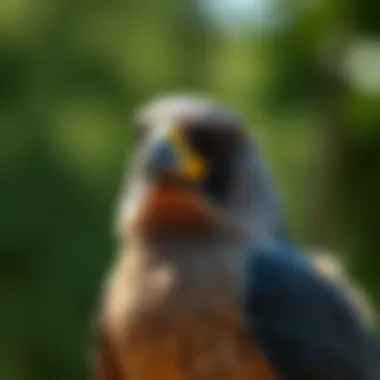
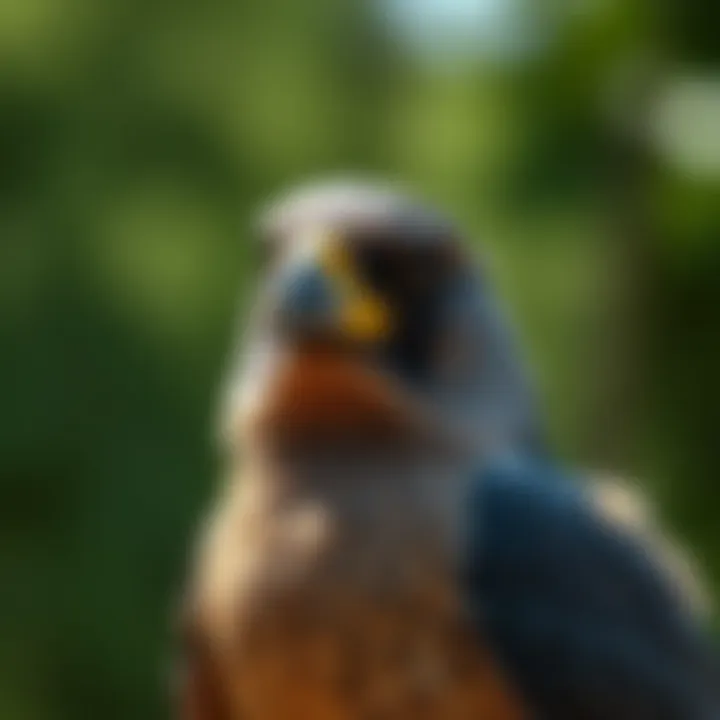
On the flip side, ultrasonic repellents have their limitations. They may not cover a broad area effectively and works best in open spaces where sound can travel freely. Additionally, birds can become acclimatized to these sounds over time, reducing their effectiveness.
Predator Decoys
Another fascinating method involves the use of predator decoys. This strategy hinges on the innate fear that birds have of natural predators. Commonly used decoys include owls and hawks, crafted in ways that make them look lifelike. Placing these decoys strategically in a garden can work wonders.
Pros of Using Predator Decoys:
- Psychological Deterrent: Even the sight of these replicas can scare birds away without any harm.
- Cost-Effective: Decoys can be a low-cost solution requiring minimal effort for installation.
Nonetheless, it’s important to consider that birds can eventually recognize a static decoy as harmless if it remains stationary for too long. Hence, it’s wise to reposition them intermittently to keep up the illusion of danger.
Safety Considerations
Using bird scare tape as a deterrent strategy raises several safety considerations that need to be thoughtfully addressed. Although primarily designed as a harmless method of keeping birds at bay, understanding and implementing safety measures is crucial for both humans and wildlife. Prioritizing safety leads to greater overall effectiveness and ensures that the surrounding environment remains undisturbed by unintended consequences.
Non-Toxic Materials
One of the primary advantages of bird scare tape is its fabrication from non-toxic materials. This characteristic is paramount for those who seek sustainable pest control methods. Typically, these tapes are made from Mylar or reflective plastic, marketed as eco-friendly options that pose no significant risk to plants, pets, or humans. Choosing products designed with clear labeling that indicates non-toxicity fosters peace of mind for homeowners relying on them.
- Quality Check: Always look for certifications or seals of approval that guarantee the product's safety.
- Environmentally Friendly: Emphasize materials that will not leach harmful substances into the soil or water supply.
In contexts where children or pets frequently play, opting for bird scare tape with verified safety standards is essential. Ensuring that the materials used are free from harmful chemicals not only supports a healthy environment but also reflects on responsible pest control practices.
Effects on Non-Target Wildlife
While bird scare tape primarily targets specific kinds of birds, it’s vital to consider its potential ramifications on non-target species. Not all critters will react the same way to reflective or moving materials. For example, while a sparrow may be deterred by the shimmering effect of the tape, a small mammal like a rabbit might not be affected at all. In some cases, these tapes can unintentionally interfere with the natural habitats of beneficial wildlife.
Addressing this aspect involves a few considerations:
- Placement: It’s crucial to strategically place the tape in areas that don't disrupt the habitat of non-target animals.
- Monitoring: Regularly observe the area to ensure that other wildlife is not adversely affected. If something seems amiss, reconsider the use of tape in that area.
- Diversity of Solutions: Incorporating diverse methods of deterrence, such as netting or natural deterrents, can mitigate unwanted side effects on non-target wildlife.
"Effective bird control doesn't mean harming the surrounding ecosystem; it's all about informed choices and balanced methods."
Case Studies and Applications
In the world of pest control, particularly regarding birds, bird scare tape has found its way into various scenarios where traditional methods fall short. Understanding real-world applications can provide insights into its effectiveness and adaptability. Both agricultural uses and layouts in urban settings present unique challenges that this tape measures up to. Let’s delve into how it functions in these contexts, its benefits, and the considerations you should keep in mind.
Agricultural Use
For farmers, maintaining crop yield is paramount. Birds can wreak havoc on fields, especially ripe fruits and grains. Here is where bird scare tape shines. Its reflective surfaces and movement commingle to create an environment that feels threatening to our feathered foes. Here are some notable points regarding its use in agriculture:
- Cost-Effective Solution: Compared to netting or complex netting systems, bird scare tape is often a more economical choice. Farmers can invest in tape rolls without breaking the bank.
- Easy Application: With simple installation requirements, it can be quickly deployed over a vast area. This agility means farmers can protect their fields efficiently before a bird infestation takes root.
- Real-world Impact: Farmers in places like California have reported significant decreases in bird damage after using scare tape strategically across vineyards. They often incorporate it with other methods, enhancing its efficacy without relying solely on one form of deterrent.
"Bird scare tape works best when used as part of a comprehensive strategy that includes regular monitoring and complementary methods."
Employing this tape allows farmers to balance the needs of their crops with eco-friendly practices. It ensures minimal disruption to the agricultural ecosystem while effectively keeping nuisance birds at bay.
Urban Settings
As cities burgeon and green spaces dwindle, urban areas face their own bird-related challenges. From pigeons nesting on rooftops to sparrows raiding community gardens, the need for effective bird control methods is evident. Here’s how bird scare tape finds its role in such urban landscapes:
- Versatile Application: Whether on a balcony garden or in public parks, tapes can be applied in various settings. Its adaptability means urban residents and local councils can creatively leverage this tool.
- Deterring Pest Birds: Pigeons, for example, pose numerous residential hazards, from unsightly droppings to potential health risks. Residents have found success using bird scare tape alongside harmless decoys, resulting in cleaner environments and healthier living spaces.
- Aesthetic Considerations: Although functional, the tape can also be tastefully integrated into the design elements of an urban garden, contributing to the overall aesthetic without being unattractive.
Urban dwellers, particularly those maintaining gardens in limited spaces, have reported successes with this approach. By reducing bird presence, they foster a conducive environment for plants to thrive and families to enjoy.*
Closure
The discussion surrounding bird scare tape has illuminated several important aspects of its use as an effective deterrent for unwanted avian visitors. In reviewing various points throughout this guide, it becomes evident that bird scare tape is more than just a shiny strip; it's a strategy that integrates technology, instinct, and nature. The various types of tapes available—from reflective to infrared—showcase not only its versatility but also its specific applications tailored to different situations.
Bird scare tape serves as a bridge between conscientious gardening and the persistent challenges posed by birds. Homeowners and those managing gardens stand to benefit immensely from understanding both its advantages and its limitations. Cost-effectiveness, eco-friendliness, and ease of usability are compelling strengths that draw many towards this solution. Furthermore, knowing how to correctly install the tapes can significantly enhance their overall efficiency.
However, it’s vital to remain aware of the tape's temporary efficacy and maintenance needs. The knowledge of these factors can help users maintain a realistic expectation about the results—they can deter birds, but it may not be a long-term fix without proper care and possibly periodic replacement or adjustment.
Summary of Findings
Bird scare tape presents a practical, eco-friendly, and notably cost-effective method for deterring birds. This guide has emphasized the importance of understanding its mechanisms—from how movement and light affect its attractiveness to birds, to the specifics of installation that can maximize its impact. Key takeaways include the consideration of location, ongoing maintenance, and the potential need for a multi-faceted approach when dealing with persistent bird issues.
Additionally, the case studies highlighted various successful applications in agricultural settings and urban environments, showcasing the adaptability of bird scare tape in diverse scenarios. Users can glean valuable insights by carefully assessing their unique needs and the environmental context in which they operate.
Future Directions in Bird Deterrence
As we look ahead, the future of bird deterrence will likely see enhanced technology and integration with modern gardening practices. Innovations in materials, perhaps embedding movement sensors or light-enhancing technologies, could emerge, providing even more sophisticated solutions. Likewise, the rise of smart gardening systems could incorporate bird scare tape into automated schedule management, ensuring optimal placement and maintenance.
Collaboration between researchers, manufacturers, and environmentalists may lead to the development of more sustainable materials for bird scare tapes, further reducing any ecological footprint.
While bird scare tape remains a valuable tool now, evolving it to function in conjunction with other bird deterrent methods—such as sonic deterrents or natural predators—could yield impressive results. The exploration of multi-modal approaches is a promising avenue for the diligent gardener looking to secure their garden while respecting nature.
For those interested in further reading or exploring innovations in related fields, consider visiting credible sources such as Wikipedia or Britannica.



